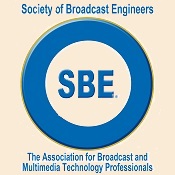
|

CHAPTER 24, Inc., MADISON, WI
|
|
Monthly eNews
|
August 2021
|
Our Next Meeting:
Wednesday, August 25th
IP Prompting Solutions Including SMPT 2110
by Michael Accardi of CueScript
7:00 PM - Meeting/Program
This meeting is Virtual
Connection information will be distributed
in the days just prior to the meeting.
Last Meeting's Minutes
Submitted by Mike Travis, Secretary
The SBE Chapter 24 meeting was called to order by Matt Mommaerts at 7:01pm, July 29th, 2021 via Zoom.
Michael Travis made a motion to approve the secretary meeting minutes from 6/23/2021, seconded by Matt Mommaerts and approved as submitted.
Mike Norton, as Chapter Treasurer, reported the 2020 Rebate check ($537.75) has been returned to the SBE National office and donated to the Ennes Educational Foundation Trust.
There were two sustaining membership checks received in July, from Resonant Results and SBG/WMSN-TV. Following those deposits the Chapter 24 checking account balance remains in the black.
Leonard Charles reports the deadline for articles for the August eNews letter is Monday August 2nd at 5pm. Please forward any article of interest to Chapter members to Leonard Charles.
For the membership report Leonard Charles asked Scott at national for an updated list. We stand at 48 official members of the National SBE assigned to Chapter 24.
Fred Sperry, as Sustaining Membership Chair, reports WMSN, Full Compass and Resonant Results renewed their membership. We remain at eleven sustaining members. Fred is asking for a replacement as sustaining member chair as he is retiring at the end of the year and wants someone that is active in the industry to assume the role. Congratulations Fred and thanks for the last 25 years as Sustaining Membership Chair!
Matt Mommaerts, as head of the program committee, reports we have a program set for October, Evolution of Industrial Batteries.
With certifications and education, Jim Hermanson reported there hasn't been a lot of activity for certification locally. We have an exam session coming up November 5th - November 15th. September 10th is the deadline to sign up for that exam session. Jim has an early copy of the August "Signal". Vicki Kipp and Dennis Baldrige will be mentioned in the next edition, we look forward to that!
Tom Smith, with frequency coordination, reported we received coordination requests for the Crossfit games. Tom hasn't heard anything for the Trek bicycle event.
With the National SBE news, Leonard Charles reports the annual election of officers and directors for the national SBE Board of Directors is happening now through August 25th. You'll be choosing from one candidate for each officer position and seven candidates for the six available director seats. You should have received a unique link to the ballot in your email inbox. If you opted out of electronic voting you will receive and cast your ballot through the mail. Please be sure to vote. These volunteers deserve your consideration.
SBE Ennes Workshops will resume following the pandemic with an event planned for Harrisburg, PA, on August 27th. SBE Chapter 41 will be hosting this event. The theme for the day-long event is "Transitioning to ATSC 3.0". The SBE Compensation Survey results are now available. Contact the National office if you'd like to receive a copy. The next upcoming webinar will be the 2021 IP Networking, Part 8 "IP Network Troubleshooting" on Aug 19th at 1pm central time.
Kevin Rupert made a motion to adjourn, seconded by Thomas Smith. Meeting adjourned at 7:13pm.
The meeting was followed with a presentation on "A Century of Broadcasting
Some of What You Know is Not True". The presentation was hosted by Barry Mishkind. Thank you Barry! Feel free to check out Barry's websites www.thebdr.net/ and www.oldradio.com.
Broadcasters Clinic Registration is Open
The Wisconsin Broadcasters Association and the four Wisconsin SBE Chapters welcome the Broadcasters Clinic back as a live event! The dates are September 8-10 at the Madison Marriott West. Click Here for the session agenda and registration.
Don Borchert Fellowship
The Don Borchert Broadcasters Clinic Fellowship honors the founder of the conference and will provide all expenses to attend the Clinic in Madison Sept. 8-10, 2021. The program is possible through the financial support of all four Wisconsin SBE Chapters, and the WBA. Applications are now being accepted for the 2021 Broadcasters Clinic Conference. Download the application form.
Job Opening: WKOW TV, Part Time Master Control Operator
For information Click Here
Search for a new Sustaining Membership Chair
Chapter 24 is searching for an individual to take over as Sustaining Membership Chair for the chapter. Tasks involve sending out renewal notices to existing sustaining members of Chapter 24, sending application materials to prospective sustaining members, forwarding the received payments to the Chapter 24 Treasurer and providing announcements of new members and renewals at chapter meetings. All the necessary paperwork to do these tasks have already been created, so the workload for this position is minimal. This is a great way to be involved in Chapter 24 with a minimal time commitment.
If you are interested in taking over this position, please contact Chapter Chair Matt Mommaerts or current Sustaining Membership Chair Fred Sperry.
Thank you for your consideration!
PBS Wisconsin Remembers Gene Purcell
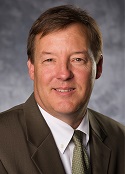
1960-2021
Wisconsin's Public Media system is shocked and saddened with the sudden loss of Gene Purcell in a traffic accident. Purcell was described by staff as "genuinely interested in how you were doing". He was one of a kind, "even delivered mail and packages to people who were in the office during this pandemic". "He was the best".
PBS Wisconsin published a tribute on their website.
Program Ideas Appreciated
The Chapter 24 meeting schedule is available here. Our 2021 schedule is full so we are working on the 2022 calendar. Is there a topic you would like to see covered at one of our local Chapter 24 meetings? Or, better yet, is there a topic that you'd like to speak about at an upcoming meeting? Please forward any ideas to Matt Mommaerts or to one of the Chapter 24 officers for consideration.
EAS Deadlines
Info from Gary Timm
WI EAS Committee Broadcast Chair
It will be a busy August for EAS this year, so here's a summary of your To Do List items for the month's deadline dates:
1) RIGHT NOW: 2021 EAS Operating Handbook: The FCC has issued a new 2021 EAS Handbook in PDF form that must be downloaded, check-boxes and blank lines filled in with your specific facility details, and then posted at your facility normal duty positions or EAS equipment locations, per FCC rules.
See: https://www.fcc.gov/general/eas-test-reporting-system#eas-operating-handbook
2) AUGUST 11, 2021: Nationwide EAS + WEA Test: Please see page below on the WBA website for all the details on the test that you will need, including a 6-item Prep List to be sure your EAS equipment is ready for the test.
See: https://www.wi-broadcasters.org/be-prepared-for-2021-nationwide-eas-test/
3) AUGUST 12, 2021: ETRS Form 2: By the day following the test, you must fill out Form 2 on ETRS (EAS Test Reporting System) - same webpage as FCC EAS Handbook above. The FCC rules say you must complete Form 2 "within 24 hours of the test", but the FCC didn't give any time-of-day deadline on August 12, so it would seem getting it done by the end of the day should be acceptable.
4) AUGUST 21, 2021: FEMA IPAWS Digital Certificate Update: The current IPAWS certificate expires on August 21, and must be updated on your EAS unit by that date. You likely have already received notice of this needed action from your EAS equipment vendor. If not, see the vendor pages below. NOTE: This update DOES NOT need to be done prior to the Nationwide EAS Test, only prior to the August 21 date.
DASDEC: http://www.digitalalertsystems.com/ (Links at top of page to FEMA certificate info and Nationwide EAS Test info)
Sage ENDEC: http://www.sagealertingsystems.com/ (Certificate details at top of page)
Gorman-Redlich: http://www.gorman-redlich.com/
Trilithic: https://www.viavisolutions.com/en-us/software-download/easycap-20-and-30-series-software
FYI) OPTIONAL STEP: How to receive WEA Test on your phone: If you are interested in receiving the WEA Test that will be issued simultaneous with the Nationwide EAS Test on August 11, 2021 at 1:20PM CDT, you must opt-in to the "WEA Test Code" option on your phone (which is opted-out by default). The opt-in for Android phones is found in your WEA menu, but on Apple iPhone you must enter a string of numbers on the keypad. Instructions for both devices is in this FEMA IPAWS Tip sheet: https://content.govdelivery.com/accounts/USDHSFEMA/bulletins/28b6703
Amateur Radio News
Compiled by Tom Weeden, WJ9H
8 Meter Experiments
Amateur radio operator Lin Holcomb, NI4Y, in Georgia has obtained an FCC Part 5 Experimental license for studying a potential new 8-meter amateur allocation. The experimental station's call sign is WL2XUP, licensed to operate with up to 400 W effective radiated power (ERP) between 40.660 MHz to 40.700 MHz.
John Desmond, EI7GL in Ireland, reports that as of mid-July, WL2XUP was intermittently transmitting on Weak-Signal Propagation Reporter (WSPR) on 40.662 MHz (1500 Hz) for 2 minutes out of every 10, with an output power of 20 W ERP into an omnidirectional antenna and was recently heard in England. The 8-meter band is affected by several propagation modes, including tropospheric ducting, sporadic E, transequatorial propagation (TEP), and F2 propagation.
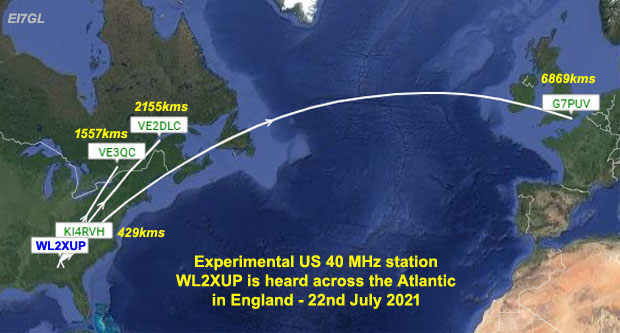
Map courtesy EI7GL - https://ei7gl.blogspot.com/2021/07/us-experimental-40-mhz-station-wl2xup.html
A 2019 Petition for Rulemaking (RM-11843) asked the FCC to create a new 8-meter amateur radio allocation on a secondary basis. The Petition suggests the new band could be centered on an industrial-scientific-medical (ISM) segment somewhere between 40.51 and 40.70 MHz. The spectrum between 40 and 41 MHz is currently allocated to the federal government and, as such, within the purview of the National Telecommunications and Information Administration (NTIA). ARRL member Michelle Bradley, KU3N, of Maryland, filed the petition on behalf of REC Networks, which she founded and described in the Petition as "a leading advocate for a citizen's access to spectrum," including amateur radio spectrum.
TV From Space
Russian cosmonauts on board the International Space Station (ISS) will transmit slow-scan television (SSTV) images from the station on 145.800 MHz FM on Friday and Saturday, August 6-7. They will use SSTV mode PD-120. The transmissions are part of the Moscow Aviation Institute SSTV experiment (MAI-75) and will be sent via RS0ISS, the ham station in the Russian Zvezda (Service) module using a Kenwood TM-D710 transceiver.
The announced schedule is August 6, 1050-1910 UTC; August 7, 0950-1555 UTC. Dates and times are subject to change. For stations in the ISS footprint, the RS0ISS signal should be easy to copy on a handheld transceiver or scanner and a quarter-wave whip. Free SSTV decoding software is available to download (at your own risk - search for MMSSTV or RX-SSTV). Satellite pass predictions are available from the AMSAT web site.
Solar Flare
The first X-Class major solar flare of Solar Cycle 25 blacked out high-frequency (3-30 MHz) propagation for a time on July 3. "I was on 20-meter FT8, and my waterfall display went from solid red signals to solid nothing in the blink of an eye," Scott Craig, WA4TTK, told "K7RA Solar Update" Editor Tad Cook, K7RA. "It lasted about 10 minutes." Craig was not alone.
"Many American radio amateurs reported sudden HF propagation blackouts on Saturday morning, July 3, when solar active region 12838 produced an X1.5 major solar flare that reached maximum intensity at 1429 UTC, the first X-class solar flare of Solar Cycle 25 and the first since 2017," said Frank Donovan, W3LPL. "HF propagation blackouts are caused when x-ray and extreme ultraviolet radiation from X-class solar flares strongly ionizes the absorbing D-region in the Earth's sun-facing dense lower ionosphere," he explained.
In this instance, it caused what NOAA's Space Weather Prediction Center (SWPC) calls an R3-level or "strong" radio blackout (on a scale of R1 - R5). An R3 incident can cause a "wide-area blackout of HF radio communication [and] loss of radio contact for about an hour on [the] sunlit side of Earth. Low-frequency navigation signals degraded for about an hour."
(Excerpts from the American Radio Relay League's arrl.org web site)
FCC NEWS
compiled by Tom Smith
FCC Updating Radio Technical Rules
On July 12th, the FCC adopted and released a Notice of Proposed Rulemaking (FCC-21-84A1) that updates or repeals a number of rules affecting both AM and FM broadcasters. Many of the rules are in conflict with other updated rules or just outdated.
The first rule that was eliminated was the rules that limited the power output of an AM transmitter depending on the license of the station. An AM station operating with 1 KW or less was limited to a 1 KW transmitter, a 2.5 KW station was limited to a 5 KW transmitter, a 5 or 10 KW station was limited to a 10 KW transmitter and a 25 or 50 KW station was limited to a 50 KW transmitter. Under the proposed rule one could use any size transmitter, as the final power is determined by the measured power to the antenna. Cost of the transmitter and operating costs would be expected to be the practical limit for the station when purchasing a transmitter which makes the current rule redundant.
The second rule that the FCC is proposing to change is the requirement that a station prove that their antenna does not have an effect on nearby FM or TV antennas. The rule was seldom used and the FCC did not know of any interference issues in the placement of FM antennas in the 70 years the rule existed.
The third rule change affects non-commercial education stations. The proposed rule change will harmonize the community coverage rules for stations with directional antennas or stations reducing their power levels to that required for all other NCE stations. Currently the rules require directional and reduced power stations to provide coverage to a portion of their licensed community while all other NCE stations must cover either 50% of the area within the community's boundaries or 50% of the community's population. The proposed rule will require the directional and reduced power stations to provide the same coverage as all other NCE stations.
The fourth proposed rule change also affects NCE stations. The proposed rule affects the interference contour overlap on the second adjacent spacing between the class D NCE station and all other NCE stations. Currently the 60 dbu contour of the class D station cannot overlap the 80 dbu contour of another NCE station. The FCC is proposing to restrict the overlap limit of a class D station's 60 dbu contour to the other NCE stations 100 dbu contour. This would make the locating of class D stations less restrictive. A class D station operates with 10 Watts and as of 1980 no new class D stations have been authorized and existing class D stations at that time were required to move into the commercial band if possible with secondary status.
The fifth proposed rule addresses the fill-in area of a AM station. The fill-in area is the area that an AM station can place a FM translator. Currently one section of the rules reads that the 60 DBU contour of the FM translator must be within the 2 mv contour of the AM station or within 25 miles of the AM transmitter whichever is lesser. Another section of the rules keeps the same limits, but allows the translator to be place within either AM contour whichever is greater. The proposed rule change will make both sections of the rules allow for the greater distance. This action will correct an error in the rules when the FCC allowed the use of the greater distance.
The sixth proposed rule pertains to FM stations in Alaska. TV and FM stations in the 76 to 100 MHz portion of the FM band had to protect common carrier stations that were also licensed in the FM band. There are no longer any common carrier stations operating in this band, so the protection requirement will be repealed as it is no longer needed.
The final proposed rule change affects FM station spacing requirements for stations with-in 320 kilometers of the Mexico and Canadian Borders. There are agreements that define the spacing requirements between stations on each side of the borders. This action would make the FCC rules agree with the international treaties with Mexico and Canada.
New EEO Rules
The FCC is seeking comment on new rules concerning the collection of employment data of broadcast stations under the Equal Employment Opportunity Act. The FCC collected data for stations yearly for about 30 years until 2001, when the rule was suspended due to a court ruling on the constitutionally of the data collection. The FCC tried to reinstate the collection of employment data in 2004, but ran into confidentiality issues. The FCC has not collected employment data since then. The data that was collected pertained to the gender and ethnic make-up of a station's workforce. The FCC is asking for comment on how the data would be collected and used, how confidentiality could be maintained and how it could affect hiring decisions. Broadcasters have previously been concerned that the hiring decisions could pressure stations to hire based on gender or race policies which would be against the court's ruling. This Notice of Further Rulemaking (FCC-21-88A1) was adopted on July 23rd.
New TV Allocation
On July 27th, the FCC adopted a Report and Order (DA-21-920A1) that assigned Eagle River, Wisconsin a second TV allocation. The FCC assigned channel 26 to Eagle River, a community of 1398 people in the 2010 census at the request of Gray Broadcasting. Gray is in the process of purchasing WYOW-TV (digital channel 28, virtual channel 34) in Eagle River which is currently part of the Quincy TV stations, but will be converted to a Satellite station to Gray's WSAW in Wausau. The new allocation will be subject to auction if there is more than one applicant.
For the Record
(Wisconsin FCC Actions Granted)
compiled by Leonard Charles
from the FCC Daily Digest
7/27/2021
FCC Report and Order DA 21-920
Adding DTV Ch 26 to Eagle River, WI
as its second TV service.
NPRM released on 4/16/21.
|
Certification and Education
compiled by Jim Hermanson
Check the August 2021 National SBE publication The Signal for a nice writeup on Vicki Kipp and Dennis Baldridge on their success passing the ATSC3 exams!
The Open Exam Schedule
| Exam Dates |
Location |
Application Deadline
(to SBE National Office) |
November 5-15, 2021
|
Local Chapters (Madison Area)
|
September 10, 2021
|
Each year, account balance permitting, Chapter 24 will reimburse half the application fee to any member of Chapter 24 in good standing who successfully obtains any SBE certification level not previously held by that member. Contact the SBE Chapter 24 chairperson or certification chairperson for more information.
When you are ready to take an SBE exam, note the open exam schedule, complete the appropriate application (found here... http://www.sbe.org/applications) and send it directly to the SBE National office (see address below) with the respective fee. You will be notified once your application is approved. Your local certification chairman will receive a list of applicants and exams in his/her chapter and arrange for a proctor. He/she will then contact applicants to schedule a mutually agreeable date, time, and place for the exam(s) within the respective exam date window. This must be coordinated before the exam will be sent by SBE National. Completed exam(s) will be mailed back to SBE National for grading. Pass/fail results will be mailed directly to the applicants within approximately six weeks.
The majority of SBE certifications are open book and access to the Internet is allowed to give a more "real world" situation.
You may mail, email or fax your applications to:
Megan E. Clappe
Certification Director
9102 N. Meridian St.
Suite 150
Indianapolis, IN 46260
317-846-9120 Fax
mclappe@sbe.org
|
To apply for a specialist certification, an individual must currently hold certification on the Broadcast Engineer, Senior Broadcast Engineer, Professional Broadcast Engineer or Broadcast Networking Engineer Certification level. Exams must be completed within three hours and consist of 50 multiple-choice questions (two points each) and one essay question (20 points maximum). Examinees are provided one essay question to answer. Exams are pass/fail, and a score of 84 is a passing grade.
August Live Webinars
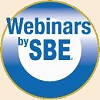
2021 IP Networking, Part 8: IP Network Troubleshooting
August 19, 2021 | 1 p.m. CT
The 2021 IP Networking series continues with Module 8: IP Network Troubleshooting. Part 8 of the series will focus on understanding IP network troubleshooting. Topics to be covered include: structured troubleshooting, physical network troubleshooting, ethernet troubleshooting, ICMP Fundamentals (ping & traceroute), TCP/IP troubleshooting; common network faults and issues; and an open-source tools overview.
Your Instructor
Wayne Pecena, CPBE, 8-VSB, AMD, ATSC3, DRB, CBNE
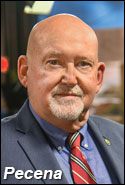
Wayne M. Pecena is the Associate Director of Educational Broadcast Services at Texas A&M University. Wayne has over 48 years of broadcast and IP network engineering experience and holds BS and MS degrees from Texas A&M University. Wayne is a Fellow of the Society of Broadcast Engineers (SBE) and holds the Certified Professional Broadcast Engineer (CPBE) and Certified Broadcast Network Engineer (CBNE) certifications from the SBE. He currently serves in his second term as the national President of the SBE. He was named the 2012 SBE Educator of the Year, the 2014 Radio World Engineer of the year, and named an IEEE-BTS Distinguished Lecturer in 2018. He is a frequent industry speaker on IP Networking and cybersecurity topics for the broadcast and media technology professional.
SBE Recertification Credit
The completion of a Webinar from Webinars by SBE qualifies for 1 credit, identified under Category I of the Recertification Schedule for SBE Certifications.
Registration and Pricing
This webinar will be approximately 90 minutes long.
SBE Members: $62
MemberPlus Members FREE
Non-Members: $92
Register Here
Questions?
If you have questions regarding this course, contact Cathy Orosz via email or by phone at 317-846-9000.

WebRTC: The Future of Communications?
August 24, 2021 | 1 p.m. CT
When Apple, Google, Microsoft and Mozilla team up, you might think, "Nothing good is going to come of this." But then, you might just be wrong. An open-source project is typically the last thing these tech behemoths would ever want to be involved in…let alone with their fiercest rivals. WebRTC is a pretty fascinating example of how good things can be born of necessity and how they can foster cooperation on multiple levels. We'll discuss the basics of WebRTC and the multitude of applications that are already using it to change the way the world communicates. This is especially important in light of the rapid evaporation of our "traditional" telco infrastructure. We'll also cover broadcast-specific applications and the future of live content creation.
Your Instructor
Chris Crump, CBNE, Sr. Director of Sales and Marketing, Comrex
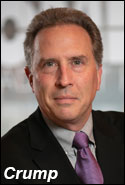
Chris Crump has served as the senior director of sales & marketing for Comrex since 2004. In 1987, he began his professional radio career at ABC/Cap Cities Detroit before taking the features editor position at MediaBase Research/Monday Morning Replay. On-air, remote broadcast engineer, creative services director roles followed for Capitol Broadcasting (subsequently Paxson Communications) in Orlando and the Ron & Ron Radio Network in Tampa/St. Petersburg. In 1996, Crump moved to the manufacturing side of the broadcast business performing sales & marketing roles for Spectral, Inc., Euphonix, Symetrix and Klotz Digital America. Crump resides in Buford, GA (outside of Atlanta), with his wife Seval, 16-year-old daughter Zara and their Affenpinscher Olive. He is a CBNE-certified member of the SBE, a member of Chapter 5 in Atlanta, and an Assistant Scoutmaster with Troops 597 and 5597 in Dacula, GA.
SBE Recertification Credit
The completion of a Webinar from Webinars by SBE qualifies for 1 credit, identified under Category I of the Recertification Schedule for SBE Certifications.
Registration and Pricing
This webinar will be approximately 90 minutes long.
SBE Members: $62
MemberPlus Members FREE
Non-Members: $92
Register Here
Questions?
If you have questions regarding this course, contact Cathy Orosz via email or by phone at 317-846-9000.
More information about registering using the SBE MemberPlus benefit
All SBE webinars are included at no additional cost for members who renew or join using the $175 SBE Member Plus membership option. Through this option you get access to all SBE webinars for no extra cost. Members can renew and newcomers may join online at the SBE website using the SBE MemberPlus option.
Access to the SBE webinars through the SBE MemberPlus program is limited to the MemberPlus-purchaser only. You are not permitted to distribute, sell, copy, share, project or otherwise make the webinars available to any other individual or group without express written permission by the SBE.
Several state-of-the-art radio, TV, multimedia, and IT engineering training is available through this page...
http://sbe.org/education/webinars-by-sbe/on-demand-webinars/
More information on SBE Education Programs is available here...
http://www.sbe.org/education/
Views expressed herein do not necessarily reflect the official position of the Society of Broadcast Engineers (SBE), its officers, or its members. SBE Chapter 24, Inc. regrets, but is not liable for, any omissions or errors. Articles of interest to Chapter 24 members are accepted up to the close of business the 1st day of each month. Send your article to lcharles@sbe.org.
|







